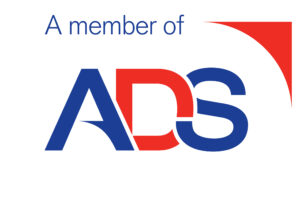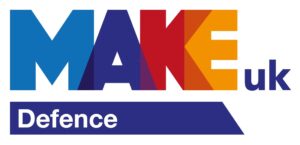Labanon Legal System Overview
Political System
Lebanon, a French protectorate from 1920 to 1943, gained its first constitution in 1926. Its leaders developed a confessional political system allocating power to religious groups based on demographic strength. Recognized are 18 sects, including Shia and Sunni Muslims, Christians, Druz, and Jewish denominations. While intended for consensus-building, critics argue it entrenches politicians and sectarian groups. Initial Christian dominance led to tensions as the Muslim population grew, contributing to the 1975-1990 civil war. The 1989 Taif agreement formalized the confessional system and mandated equal parliament representation for Christians and Muslims. Despite constitutional provisions for eliminating sectarianism, this goal remains unachieved.
President
Lebanon’s President is elected by two-thirds of the National Assembly for a six-year term. Usually, a Maronite Christian is elected. The Taif agreement allows the President to appoint and remove the Prime Minister, but other decisions require the Prime Minister’s signature.
Prime Minister
The President, with MPs and the speaker’s consent, appoints the Prime Minister and Cabinet. Usually a Sunni Muslim, the Prime Minister leads the government. Their cabinet reflects the National Assembly’s sectarian and political distribution.
National Assembly
The unicameral National Assembly, comprising 128 members, holds elections every four years, although the 2009 Assembly convened for nine years. Universal suffrage is the basis for electing MPs, and the 1989 Taif agreement guarantees an equal division of seats between Christians and Muslims. The Speaker typically belongs to the Shia Muslim community.
Political Parties
Political parties emerged in 2005 following the assassination of former Lebanese Prime Minister Rafiq Hariri, a Sunni politician. This event, coupled with the persistent Syrian military presence in the country created the formation of two distinct political coalitions.
March 8: This coalition comprises Shia-dominated parties and is pro-Syrian. It includes Hezbollah, the Shia Amal group, and the Free Patriotic Movement led by former President Aoun.
March 14: This coalition is Sunni-dominated and anti-Syrian. It comprises the Future Movement, the Progressive Socialist Party, and the Christian Lebanese Forces.
Hezbollah
Hezbollah is an armed political group formed during Lebanon’s civil war in 1982. It opposed Israel’s military intervention to expel Palestinian armed groups. Iran provides both financial and military support, and the group is designated a terrorist organisation by the United States and a proscribed terrorist organisation by the UK. Hezbollah maintains both military and political wings, having participated in elections since 1992, and has been described as operating as a “state within a state,” providing a range of social services. It has participated in Syria’s civil war in support of Bashar al-Assad and been in conflict with Israel.
The Judiciary Branch
The Constitutional Council ensures laws conform to the constitution and rules on election claims.
The Shoura Council, the highest administrative court, assists in drafting and reviewing legislation and reviews lower courts’ decisions.
Civil courts are divided into first-degree courts (one judge or three judges) and courts of appeal (governorate-based, second-degree courts reviewing lower courts). The Court of Cassation is the ultimate judicial recourse for important cases.
Commercial courts rule on commercial matters, similar to civil courts.
Criminal courts have a similar structure to civil and commercial courts, but first-degree courts examine felonies and misdemeanours, while the Court of Appeal reviews them. The Court of Cassation reviews more serious criminal offenses.
Personal status courts, composed of clergy, rule on personal status cases exclusively for their sects. Their rulings are subject to review by higher civil courts.
Police
The Internal Security Forces (SF) are Lebanon’s national police.
Modern policing in Lebanon began in 1861 with the establishment of a gendarmerie force. In April 2005, Ashraf Rifi took over as head of the ISF, succeeding Ali Al Hajj. Rifi initiated the recruitment of younger individuals to join Lebanese Intelligence. His tenure ended in April 2013, and he was replaced by Roger Salem and then Ibrahim Basbouss. On March 8, 2017, the Lebanese Cabinet appointed Imad Othman as the ISF director general, who assumed command the following day. By 2000, the ISF had a personnel count of 100,000, which increased to over 131,000 by 2013.
Military
The Lebanese Armed Forces, the national military of Lebanon, comprises three branches: ground, air, and navy. During political instability, it’s considered one of the few trusted state institutions by both the Lebanese population and the international community, ensuring stability in multi-sectarian Lebanon.
The Lebanese Armed Forces (LAF) comprises 84,200 active personnel. The ground force comprises approximately 80,000 troops, the air force 2,500 personnel, and the naval force 1,700 personnel. The remaining personnel include commanders, advisors, engineers, and members of the special forces. Notably, the LAF is an all-volunteer force. The LAF is managed and coordinated by the LAF Commander, typically a Maronite Catholic Christian from the Ministry of Defense, located in Yarzeh, east of Beirut. The current commander in chief of the Lebanese Armed Forces is General Joseph Aoun. Notably, the LAF has experienced significant growth, with the number of military personnel doubling between 1985 and 2000, placing it sixth in the world in terms of growth.
Need advice? If you’d like further information, or to discuss working with us, you can get in touch via our Contact Us page
Drop us a message
To learn more about our legal services kindly reach out by completing the form on the right.
Alternatively, you can contact our office at +44 (0) 20 3875 7422 or leave us a message.
Our team of experts is looking forward to assisting you with your legal needs.





